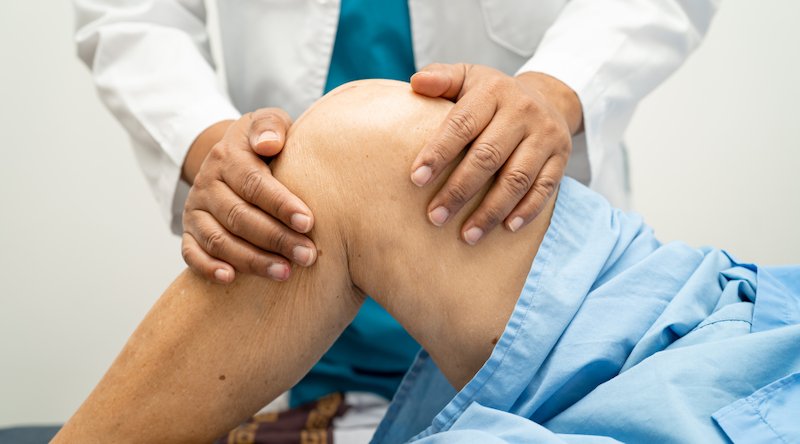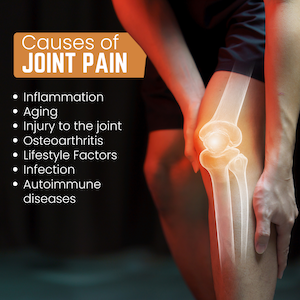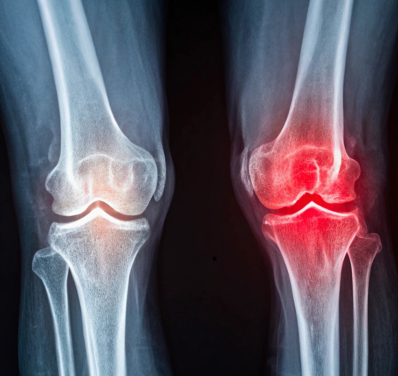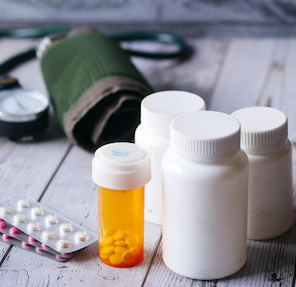


Date: 24 Sep 2025
Joint pain is defined as discomfort that affects one or more of your body's joints. A joint is where the ends of two or more of your bones meet.
Joint ache is widespread and is typically felt in the hands, feet, hips, knees, or spine. Pain in your joints might be chronic or intermittent. Sometimes your joints feel stiff, achy, or sore. Some people report a scorching, throbbing, or "grating" sensation.
Furthermore, your joints may feel tight in the morning but loosen up and feel better after moving and exercising. However, too much activity may exacerbate your pain.

Joint pain can be triggered by a variety of factors. Knowing the root cause is key to choosing the most effective remedy. Here are some common causes:
Inflammation is the body’s natural response to injury or infection, but in conditions like rheumatoid arthritis, inflammation becomes chronic, leading to pain, stiffness, and joint damage. This autoimmune disorder causes the body’s immune system to mistakenly attack the joints.
Osteoarthritis, often seen in older adults, is the most common form of arthritis. It occurs when the cartilage that cushions the joints breaks down over time, causing pain and stiffness, particularly in weight-bearing joints like the knees, hips, and spine.
Sports injuries, accidents, or repetitive movements can damage ligaments, tendons, and muscles, leading to joint pain. For instance, a sprained ankle or a torn ligament can cause inflammation and prolonged discomfort.
As we age, joint tissue begins to wear down naturally. The breakdown of cartilage, along with the reduction of synovial fluid, makes joints less flexible, which often leads to pain, especially in the knees and hips.
Conditions like lupus or psoriatic arthritis occur when the body’s immune system attacks its own tissues, including joints, leading to inflammation, pain, and stiffness.
Excess weight puts added pressure on weight-bearing joints, leading to pain, particularly in the knees and hips. A sedentary lifestyle can also weaken muscles around the joints, causing strain and discomfort.
Joint pain tends to affect people who have:
Age is also a factor in stiff and painful joints. After years of use and wear and tear on your joints, problems may arise after age 45.

Physical activity like walking, swimming, and yoga helps maintain flexibility and strength in your joints. Stretching before and after exercises can help prevent stiffness, and low-impact activities like swimming minimize strain on joints while enhancing mobility.
Example: A 45-year-old office worker with chronic knee pain found relief after incorporating swimming into his routine. The buoyancy of the water reduced joint strain while building muscle around the knee, easing pain over time.
Alternating between hot and cold treatments can provide significant relief. Heat can relax muscles and joints, while cold therapy reduces inflammation and swelling.
Doctor’s Tip: For chronic pain, use a warm compress for 15-20 minutes to ease stiffness. For acute injuries, cold therapy for 15 minutes can help reduce swelling and inflammation.
Carrying excess weight increases the pressure on your joints, especially the knees and hips. Even a small amount of weight loss can lead to a significant decrease in pain and improve overall joint function.
Did You Know? Studies show that losing just 5-10% of your body weight can reduce knee pain by up to 50%.
Certain foods and supplements are known to naturally reduce inflammation. Omega-3 fatty acids (found in fish), turmeric, ginger, and green tea have anti-inflammatory properties that can help alleviate pain.
Case Study: A woman with osteoarthritis of the knees noticed a significant improvement after consistently consuming turmeric and ginger tea for six weeks. Her pain levels reduced, and she felt less stiffness during the day.
Topical gels like Deep Heat provide quick relief by creating a warming sensation that helps relax tight muscles and ease pain. These are often recommended for temporary relief of muscle or joint pain.
Precaution: Always test on a small patch of skin first to ensure there is no sensitivity. Do not use it on broken skin.
NSAIDs like Nurofen Max Strength tablets or prescription NSAIDs (e.g., Airtal Aceclofenac) reduce inflammation and relieve pain. They are often used for short-term, acute pain relief.
Warning: Overuse of NSAIDs can lead to gastrointestinal issues or kidney damage. Always follow dosing guidelines and consult a doctor for long-term use.
These supplements support cartilage repair and joint lubrication. Long-term use of glucosamine and chondroitin may reduce stiffness and improve joint function. It’s recommended for individuals with osteoarthritis or those experiencing chronic pain.
Tip: While supplements can be effective, consistency is key. Results may take several weeks to show.

Explore these trusted solutions you can order easily from Pharmily:
Pharmily Limited Kenya offers trusted answers, whether you prefer natural options or fast-acting medicines. Visit pharmily.co.ke today, select what works for your needs, and get fast, reliable delivery right to your door.
1. What is the best natural remedy for joint pain?
Gentle exercise (like walking and stretching) and warm or cold therapy are top natural options that improve flexibility and reduce pain safely over time.
2. Are joint supplements like glucosamine effective?
Many users feel reduced stiffness and improvement in joint health after consistent use—especially when combined with a healthy lifestyle.
3. When should I use pain medicine for joint pain?
Medicines like NSAIDs are best for short-term, acute pain or flare-ups. Always consult a doctor when using them for long periods or if you have health conditions.
4. Is it safe to use topical rubs like Deep Heat on kids?
Yes, but only on older children (over 5 years), and always under adult supervision. Avoid getting it on broken skin or near eyes.